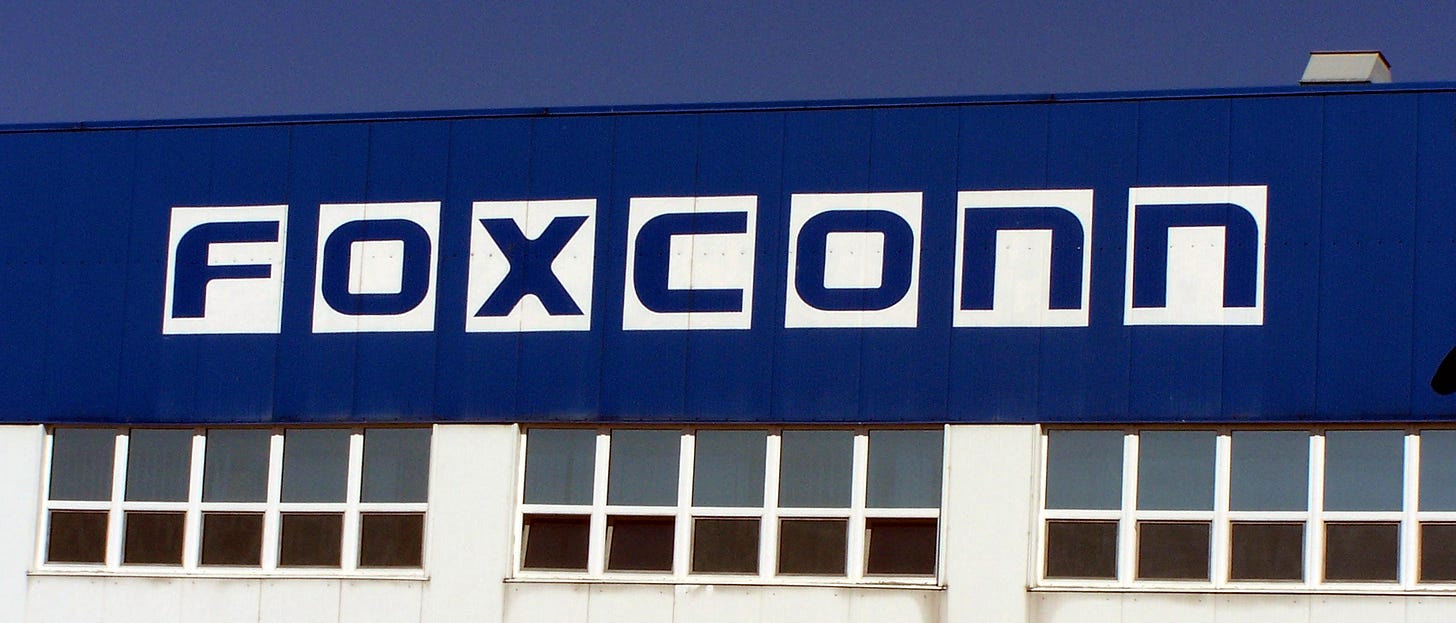What Does U.S. iPhone Tariff Threat Mean for India
President Trump's threat to tariff smartphone imports reveals the risk if India were to pursue an export driven industrial policy
May 25, 2025
In February this year, Indian officials were euphoric that the country’s industrial economy would soon receive a big boost. This was because they expected Apple and other multi-national companies to rapidly build more of their products in India, after President Donald Trump imposed major tariffs on U.S. imports from China.
In March, following the U.S. tariffs on imports from China, exports of iPhones from India to the U.S. nearly doubled to $2 billion from the previous month, according to Reuters. In 2024, India’s iPhone exports to the U.S. totaled $13 billion. As a report in The New York Times noted, “it is a point of pride for many in Indian government and business that Apple has shifted some of its iPhone assembly (to India).”
Last month, expectations among Indian officials were fueled further by Apple’s plans to source from India, by the end of 2026, most of the 60 million iPhones it sells in the U.S., according to a Bloomberg report. This meant that Foxconn and Tata Electronics, Apple’s contractors, would be assembling - not manufacturing - more iPhones in India, using components mostly imported from China.
But then, last week, a post by President Trump on Truth Social raised major doubts about more iPhones, for exports to the U.S., being assembled in India. Trump informed Apple Chief Executive Tim Cook, he stated in the post, that he expects iPhones that will be sold in the U.S. “will be manufactured and built in the United States, not India, or anyplace else. If that is not the case, a Tariff of at least 25% must be paid by Apple to the U.S.” Later, speaking to reporters, Trump added that tariffs would be imposed on all smartphones imported into the U.S.
Apparently, Trump’s message was aimed at Apple as well as India, the second-largest exporter of smartphones in the world after China. Trump’s threat of tariffs on iPhone imports from India could be part of his administration’s strategy in the current trade negotiations with India. The U.S. is seeking the lifting of all duties on exports to India.
Irrespective of the terms of the U.S. India trade agreement, Apple’s sourcing of iPhones from India appears to be a temporary, short-term strategy. It is unlikely to result in any major boost to India’s industrial economy, through a transfer of technology and skills.
This is because it is not Apple but its contract manufacturers, Foxconn and Tata Electronics, who are planning to expand production of iPhones in India. The role of contractors in India, unlike in China, is to assemble, not manufacture, smartphones. India imports, mainly from China, most of the components used to manufacture even the low-end smartphones.
In fiscal year ended September 2024, iPhone sales accounted for $201 billion, more than half of Apple’s $391 billion revenues. The company’s sales in the Americas, primarily the U.S., accounted for $167 billion, two fifths of total worldwide revenues.
So it was not surprising that, in February, following Trump’s tariffs on Chinese imports, Apple announced plans to “spend and invest more than $500 billion in the U.S. over the next four years.” The Cupertino, California based company plans to support a wide range of initiatives that focus on artificial intelligence, silicon engineering, and skills development for students and workers across the U.S. “We are bullish on the future of American innovation,” Apple’s Tim Cook said in a statement. .
China is Apple’s second largest market after the U.S. In fiscal year ended September 2024, Apple’s sales in Greater China, essentially China, were $67 billion, roughly a sixth of the company’s total sales. In 2008, Apple’s sales in China was less than $1 billion.
In the mid-1990s, Apple began offshoring its production to contract manufacturers, initially in South Korea and Taiwan, then Mexico and China. In a book published this month, Apple in China – The Capture of the World’s Greatest Company, Patrick McGee notes that “the armies of flexible, affordable, and hardworking laborers in China prevailed, aided by government policies meant to lure multinational corporations.”
Apple sent its top engineers, designers, procurement specialists, and other skilled staff from the U.S. to hundreds of factories across China where they “would import machinery, train armies of workers (28 million since 2008), co-ordinate the delivery of intermediate goods, and scrutinize suppliers to ensure compliance,” adds McGee in his book. McGee is a journalist for the Financial Times.
Up until 2019, all iPhones in China were assembled by Taiwanese contract manufacturers. Since then, notes McGee, mainland China groups, with political backing, have been taught the skills and are taking over. Chinese smartphone companies have copied much of Apple’s technology, manufacturing, design, labor training, and other practices.
In fiscal year 2024, Apple earned $93 billion in net profits, a very lucrative 24% profit margin. Apple’s profit margins will likely be reduced, at least over the next few years, even if Trump drops all tariffs on imports of iPhones in the U.S., This is because Apple’s costs will likely rise as it shifts production out of China to avoid U.S. tariffs. Also, in China, and non-U.S. foreign markets, Apple’s sales and profit margins face rising competition from Huawei, Xiaomi and other Chinese brands.
Apple’s financial prospects could be worse if Chinese officials covertly persuade consumers to boycott Apple for abandoning China. If this were to happen, India will not make up for Apple’s sales decline in China. Apple’s sales in China are four times larger than in India. In 2024, Apple sold nearly 50 million smartphones, mainly iPhones, in China, compared to 12 million in India. Sales of all smartphones in China last year totaled 285 million, nearly double that in India. This is because consumer purchasing power in India is less than a third of that in China, even though the population is roughly 1.4 billion in each of the countries.
Even assuming Apple continues to expand sourcing of iPhones in India, perhaps to serve non-U.S. markets, it is likely to resist transferring technology and skills to India, as it did in the case of China. This is because Apple will likely try to avoid being dependent again on a major supplier, as it now finds itself with China. Also, based on its experience in China, Apple will likely not want to help create rival Indian electronic device vendors.
Any increase in Apple’s production for exports from India is a plus but only if it is entirely funded by Apple or its contractors; and also if creates jobs in India. Meanwhile, as Trump’s threat to tariff iPhone imports reveals, India could waste billions of dollars, in subsidies and for funding infrastructure for contractors, if it pursues an exports-based industrial development strategy.



